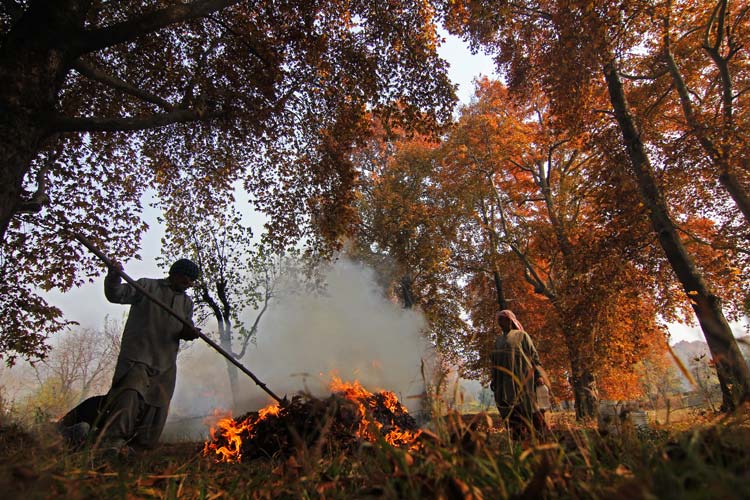The recurring energy crisis in Kashmir during the peak winter season has once again bought the state Power Development Department [PDD] in the lime light, but as Shams Irfan reports, it’s for all the wrong reasons.
While people blame PDD for being insensitive towards the hardships faced by the general public during winter by resorting to massive curtailments, officials say it’s the people who themselves aggravate the crisis by using more power [through illegal means] than they are entitled to.
“A household which has an agreement of say 1 KW consumes ten times more energy through illegal means. It adds to the crisis as we could not keep a tab on the entire population,” said Mohammad Muzaffar Mattu, Chief Engineer Electrical Maintenance and Rural Electrification [EMRE] wing Kashmir.
“We have a total demand of 700 MW in all categories during the peak times. Out of which only 330 MW is domestic category demand,” he said. “But despite providing around 980 MW of power we are still not able to meet the demand.”
Officials claim that the only way to deal with the power crisis in the valley is to install meters in the non-metered areas so that power theft is prevented to a large extent.
 “Only 330 MW is needed for the domestic use as per our estimates but despite providing more than thrice of that, it is not sufficient,” he added. To meet this huge demand PDD resorts to three day curtailment on a weekly basis which means only 220 MW is required for domestic use. Another 200 MW is kept for essential services like hospitals etc. “So, an estimated daily requirement of power after curtailment is about 440 MW. But we are providing around a 1000 MW and still cannot manage the crisis,” he adds.
“Only 330 MW is needed for the domestic use as per our estimates but despite providing more than thrice of that, it is not sufficient,” he added. To meet this huge demand PDD resorts to three day curtailment on a weekly basis which means only 220 MW is required for domestic use. Another 200 MW is kept for essential services like hospitals etc. “So, an estimated daily requirement of power after curtailment is about 440 MW. But we are providing around a 1000 MW and still cannot manage the crisis,” he adds.
The state generates around 687 MW of power from its five power plants. Lower Jhelum and Upper Sindh Stage 2nd Power Houses produce 105 MW each during the summer times while Upper Sindh Stage 1st produces only 22 MW power during the same time. On the other hand Baglihar Hydroelectric Power Project produces 450 MW and Ganderbal Power Project contributes just 5 MW of power to PDD.
But during winters when the water level is low, Lower Jhelum Power House produces only 45 MW, Upper Sindh 2nd 30 MW, Upper Sindh 1st 7 MW, Baglihar Hydroelectric Power Project produces about 150 MW, Ganderbal Power Project produces only 1.5 MW and in addition to that recently government ordered operation of Pampore Gas Turbine which generates 40 MW of power.
During winter season the collective power production falls to just 273.5 MW. But the demand is usually higher because of the cold weather.
“People have to realize their duty too so that we could get rid of these curtailments during winters. But the way people restore to hooking and power theft. On an average around 60 to 70 per cent of power is lost to such practices,” he said.
Annual power bills are to the tune of Rs 3,500 crore but only rupees 1,000 crore are collected as power tariffs. State government loses around Rs 2500 crore annually on a recurring basis. “It effects the overall development of the state. This money could have been used on other development projects,” he said.
Amidst the present power crisis in Kashmir, PDD is struggling to manage the excessive power usage by people putting a huge burden on overall supply. “We could get rid of these curtailments only if people are ready to cooperate,” he said.
“How can people expect round the clock power supply when they are not committed to comply with what they have agreed upon?” he asks.















